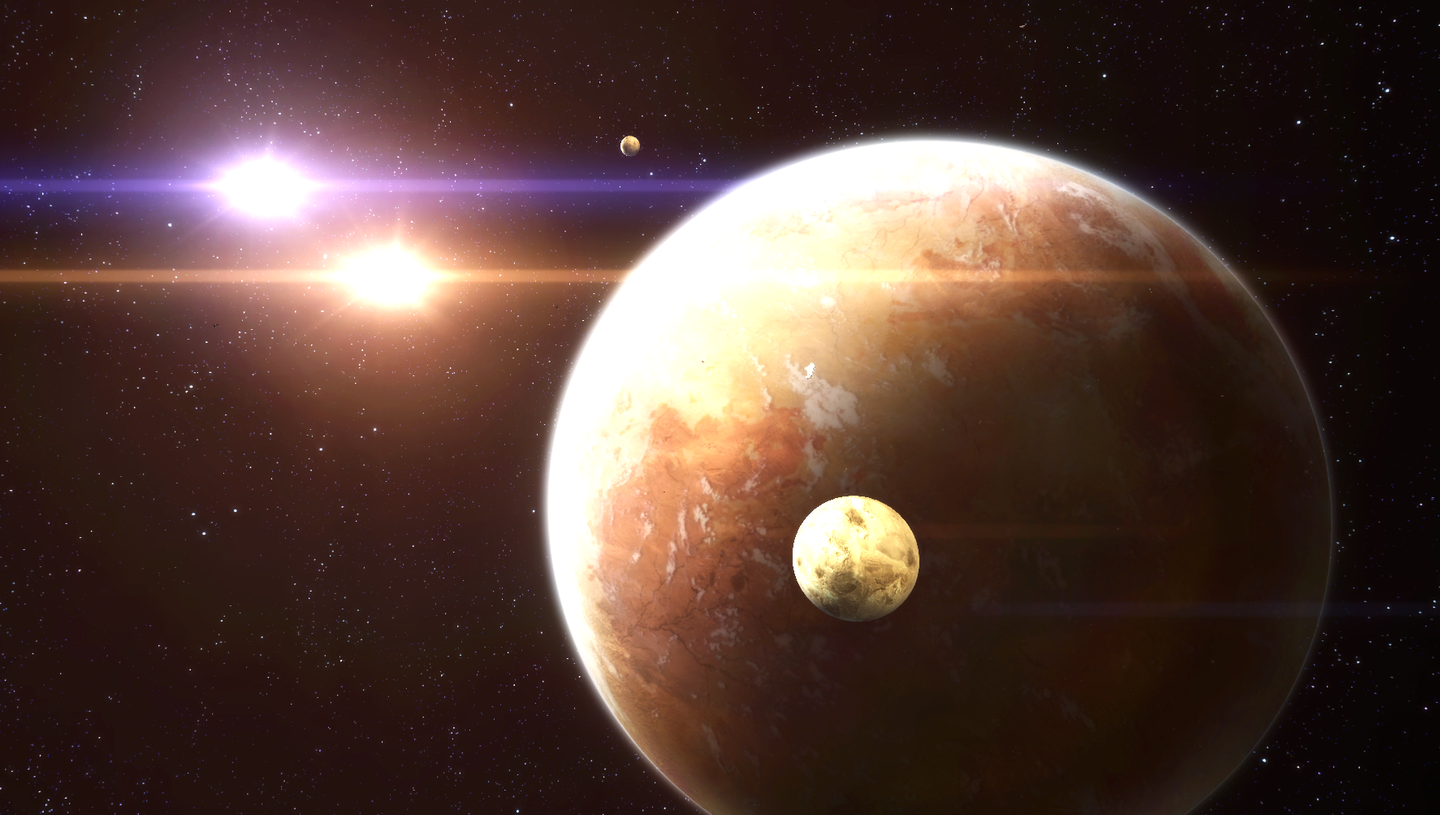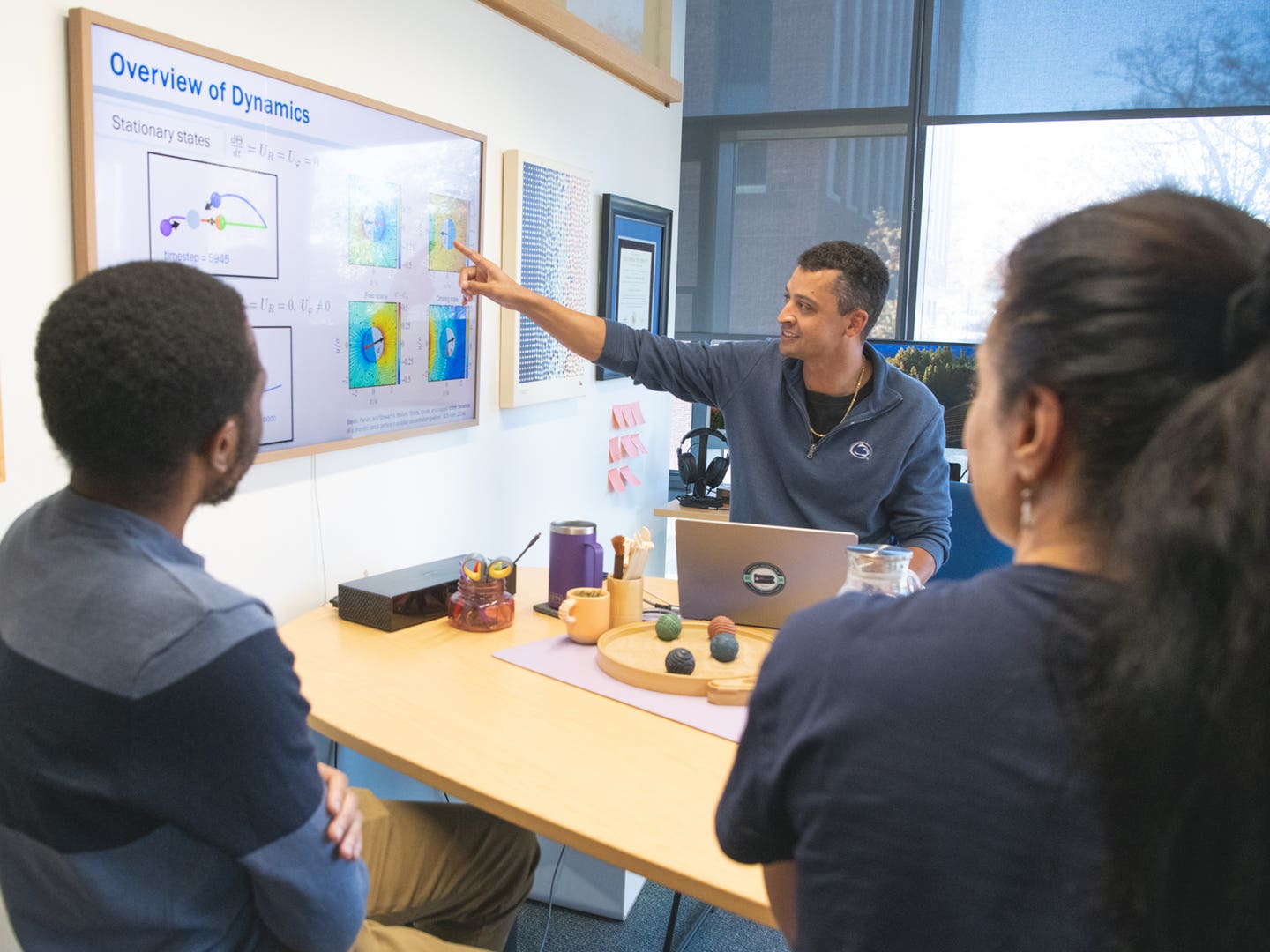Astronomers identify real-life Tatooine using new method
Astronomers have used a new technique to confirm a real-life Tatooine, the fictional planet with two suns that was home to Luke Skywalker.

[Feb 24, 2022: Laura Arenschield, Ohio State University]
Grapic representation of the Tatooine system. The planet, Kepler-16b, is about 245 light years from Earth, is a gas giant, and is roughly the size of Saturn. (CREDIT: Star Wars: The Old Republic)
Astronomers have used a new technique to confirm a real-life Tatooine, the fictional planet with two suns that was home to Luke Skywalker in “Star Wars.”
The planet, Kepler-16b, is about 245 light years from Earth, is a gas giant, and is roughly the size of Saturn. Scientists already knew that the planet existed, but in a recent study, an international team of astronomers explained how they successfully applied a technique that hadn’t been previously used to observe a planet orbiting two stars.
“It’s a confirmation that our method works,” said David Martin, co-author of the study and NASA Sagan Fellow in The Ohio State University’s Department of Astronomy. “And it creates an opportunity for us to apply this method now to identify other systems like this.”
The technique, called the radial velocity method, has long been used in astronomy. (The first planet ever found around a sun-like star was found using radial velocity – and was found using the same telescope astronomers used to find this one.)
This illustration shows the Kepler-16 circumbinary planet system, along with a depiction of the field of view of NASA's Kepler spacecraft. (CREDIT: Amanda Smith)
The radial velocity method involves analyzing the spectra of light produced by the stars. Astronomers gather spectra data through telescopes on the ground – in this case, from a telescope based in France, the Observatoire de Haute Provence. That spectra data graphs into a line, but the line “wobbles” as the planet orbits around the two stars, producing a shaky line in the spectra of light. The wobble indicates a planet is there, and astronomers can use it to derive a number of other pieces of information about a planet, including its mass.
Related Stories
Measuring radial velocity is, Martin said, among the best tools astronomers have to identify exoplanets, or planets outside our solar system. But until this study, astronomers had not been able to use it to find planets outside our solar system that orbit two stars.
The study was published this week in the Monthly Notices of the Royal Astronomical Society.
In the past, such planets – known as circumbinary planets –-- were identified by monitoring when one star passed in front of the other. That method, known as the “transit method,” has identified 14 such planets, including Kepler-16b.The first confirmed circumbinary planet was described in a paper in 2011; others have followed. But until this paper, none had been found using radial velocity.
“What people had faced was that having two sets of spectra from two stars makes it really tricky, and people were struggling to get enough precision to see the wobble caused by the planet,” Martin said. “And we got around that by making a survey of systems with two stars that orbit each other where one star is big, and one is quite small.”
The survey, called Binaries Escorted by Orbiting Planets, or BEBOP, was established specifically to search for planets like this one.
One of Kepler-16b’s stars is about two-thirds the mass of Earth’s Sun, and the other is about 20% the mass.
Astronomers had been watching this system since July 2016.
Proving that measuring radial velocities can identify planets that orbit two stars, Martin said, opens the door for the technique to be applied more broadly. That is important to astronomers for a number of reasons, but a big one is that planets that orbit two stars tend to exist at a distance that would make them good candidates for life.
“These planets are frequently found in the habitable zone, at a distance from the stars where you would expect to find liquid water,” Martin said.
Kepler-16b, which is made primarily of gas, is not likely to be a candidate where life could be found, Martin said. But using the radial-velocity method could help astronomers find other similar planets.
Martin’s portion of this work was funded in part by NASA.
For more science stories check out our New Discoveries section at The Brighter Side of News.
Note: Materials provided above by Ohio State University. Content may be edited for style and length.
Like these kind of feel good stories? Get the Brighter Side of News' newsletter.
Tags: #New_Discoveries, #Planets, #Astronomy, #Star_Wars, #Earth, #Gas_Giant, #Science, #Research, #The_Brighter_Side_of_News
Joseph Shavit
Head Science News Writer | Communicating Innovation & Discovery
Based in Los Angeles, Joseph Shavit is an accomplished science journalist, head science news writer and co-founder at The Brighter Side of News, where he translates cutting-edge discoveries into compelling stories for a broad audience. With a strong background spanning science, business, product management, media leadership, and entrepreneurship, Joseph brings a unique perspective to science communication. His expertise allows him to uncover the intersection of technological advancements and market potential, shedding light on how groundbreaking research evolves into transformative products and industries.



